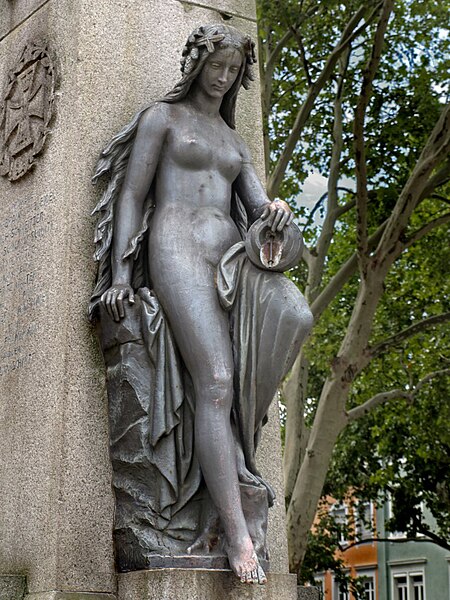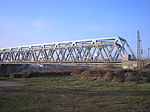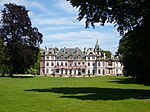The siege of Kehl lasted from 26 October 1796 to 9 January 1797. Habsburg and Württemberg regulars numbering 40,000, under the command of Maximilian Anton Karl, Count Baillet de Latour, besieged and captured the French-controlled fortifications at the village of Kehl in the German state of Baden-Durlach. The fortifications at Kehl represented an important bridgehead crossing the Rhine to Strasbourg, an Alsatian city, a French Revolutionary stronghold. This battle was part of the Rhine Campaign of 1796, in the French Revolutionary War of the First Coalition.
In the 1790s, the Rhine was wild, unpredictable, and difficult to cross, in some places more than four times wider than it is in the twenty-first century, even under non-flood conditions. Its channels and tributaries wound through marsh and meadow and created islands of trees and vegetation that were alternately submerged by floods or exposed during the dry seasons. At Kehl and the city of Strasbourg lay a complex of bridges, gates, fortifications and barrage dams. These had been constructed by the fortress architect Sébastien Le Prestre de Vauban in the seventeenth century. The crossings had been contested before: in 1678 during the French-Dutch war, in 1703 during the War of the Spanish Succession, in 1733 during the War of the Polish Succession, and earlier in 1796, when the French crossed into the German states on 23–24 June. Critical to French success was the army's ability to cross the Rhine at will. The crossings at Hüningen, near the Swiss city of Basel, and the crossing at Kehl, gave them ready access to most of southwestern Germany; from there, French armies could sweep north, south, or east, depending on their military goal.
Throughout the summer of 1796, the French and the Austrians had chased each other back and forth across the south German states. By October, the Habsburg force, under the command of Archduke Charles, had pushed the French back to the Rhine. With the conclusion of the Battle of Schliengen on 24 October, the French army withdrew south and west toward the Rhine. The French commander, Jean Victor Marie Moreau, offered an armistice that the Archduke was inclined to accept. The Archduke wanted to secure the Rhine crossings so he could send troops to northern Italy to relieve Dagobert Sigmund von Wurmser at besieged Mantua; an armistice with Moreau would allow him to do that. However, his brother, Francis II, the Holy Roman Emperor, and the civilian military advisers of the Aulic Council categorically refused such an armistice, forcing Charles to order simultaneous sieges at Hüningen and Kehl. These tied his army to the Rhine for most of the winter.On 18 September 1796, the Austrians temporarily acquired control of the têtes-de-ponts (bridgeheads) joining Kehl and Strasbourg until a strong French counter-attack forced them to retreat. The situation remained in status quo until late October. Immediately after the Battle of Schliengen, while most of Moreau's army retreated south to cross the Rhine at Hüningen, Count Baillet Latour moved north to Kehl to begin the siege. On 22 November, the French defenders at Kehl, under Louis Desaix and the overall commander of the French Army of the Rhine and Moselle, Jean-Victor-Marie Moreau, almost ended the siege when they executed a sortie that nearly captured the Austrian artillery park. In early December, though, the Austrians expanded the siege, connecting a grand parallel with a series of batteries in a semi-circle around the village and the bridges. By late December, the completed Austrian batteries connected with the captured French fortification called Bonnet de Prêtre; from these positions, the Austrians bombarded the French defenses with enfilade fire. After the defenses were thoroughly riddled by heavy bombardment from the besiegers, the French defenders capitulated and withdrew on 9 January 1797.









